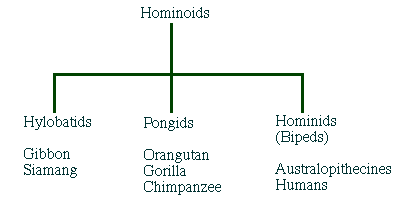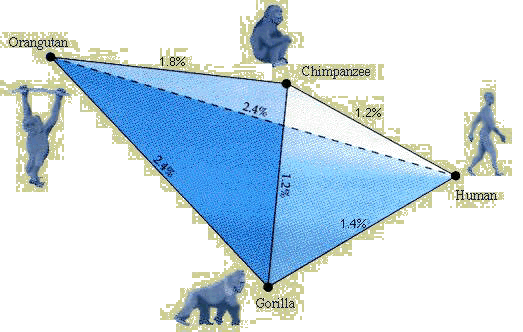
All primates share a suite of physical features that allows them to be classified into the taxonomic order, Primatae. It is hard to imagine that man shares similar features with monkeys, but we do. There are specializations of the limbs, eyes, nose, brain, teeth and social behavior that are found in all primates. The features primates share originally helped them to climb on small, thin branches of trees. Not every primate today lives on the smaller branches of the forest, but the adaptations for that environment has allowed them to be successful in other environments. As you will learn, the degree to which these shared physical features are expressed, varies.
Primate Classification
Primates are classified into two
major groups: Prosimians and Anthropoids.

Hominoid Classification
We belong to a group known as Hominoids. This group includes a number of other types of primates including the pongids (apes) and hylobatids (gibbons and siamangs)

Genetic Relationships

This shows the genetic distances
between Hominoids. Note that Chimpanzees are actually closer to humans
genetically than to Orangutans and the same genetic distance from Gorillas.
Orangutans are the most different from humans genetically yet relatively
closer to Chimpanzees. Try to think what these relationships may mean.
(link to reading)